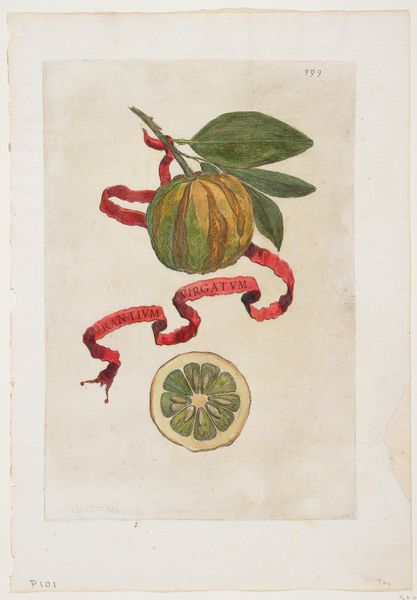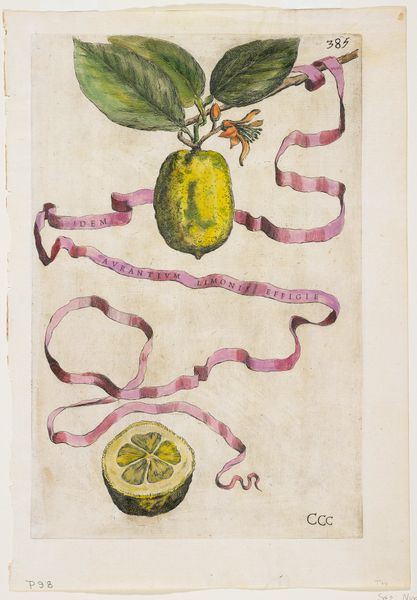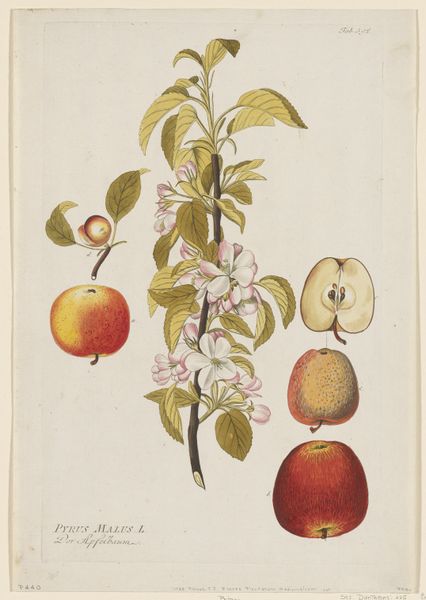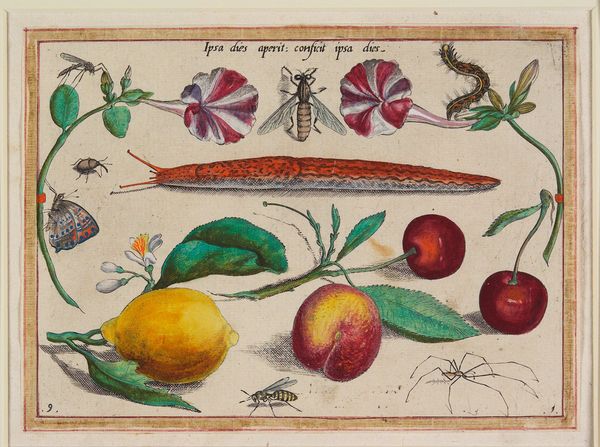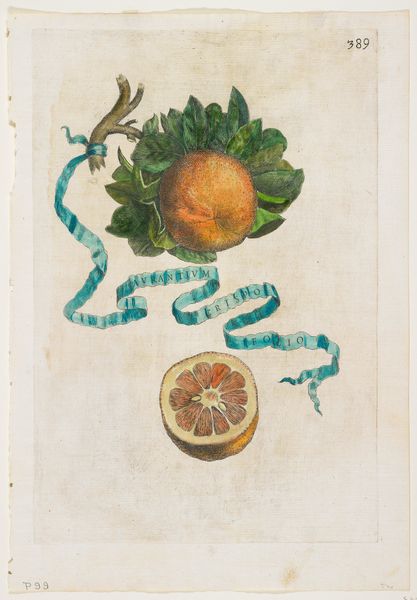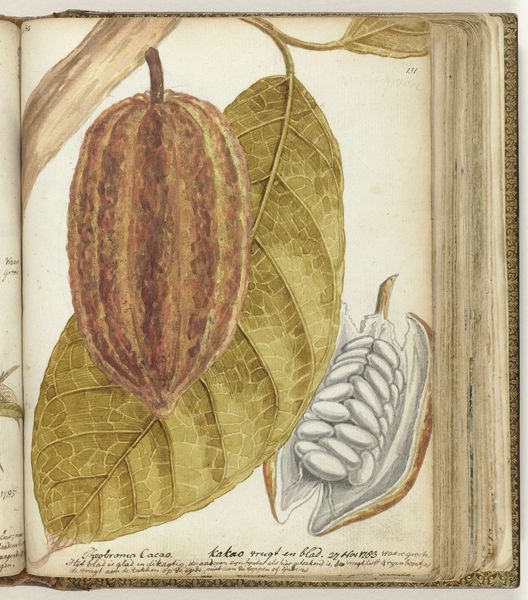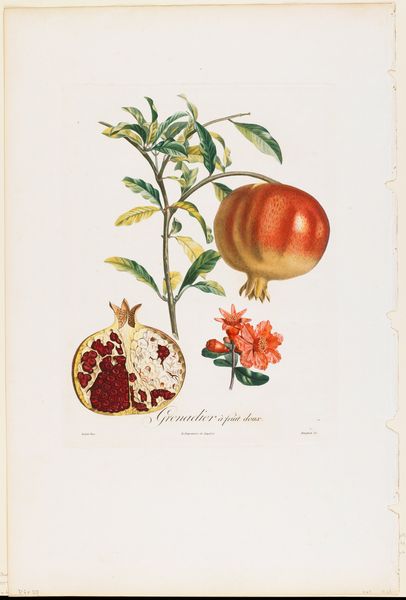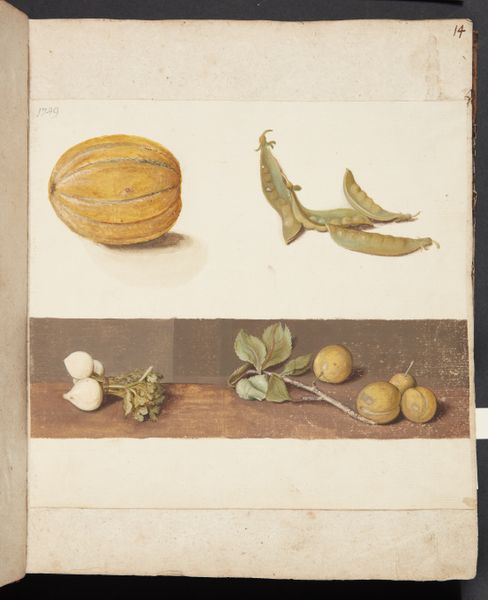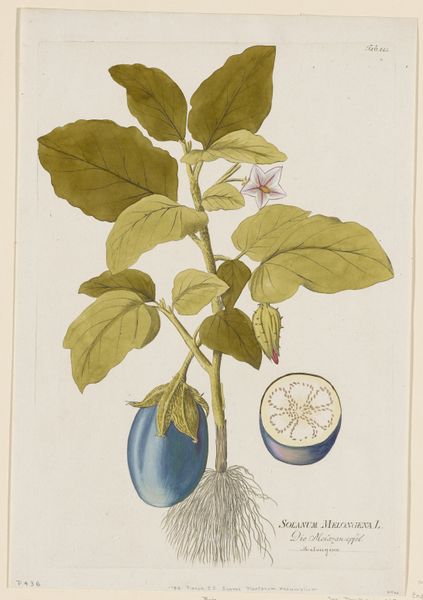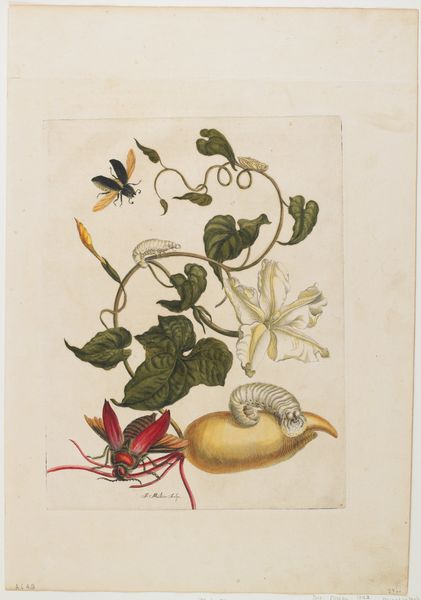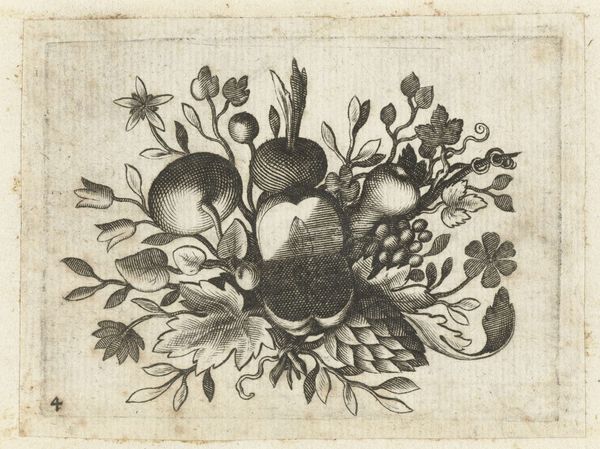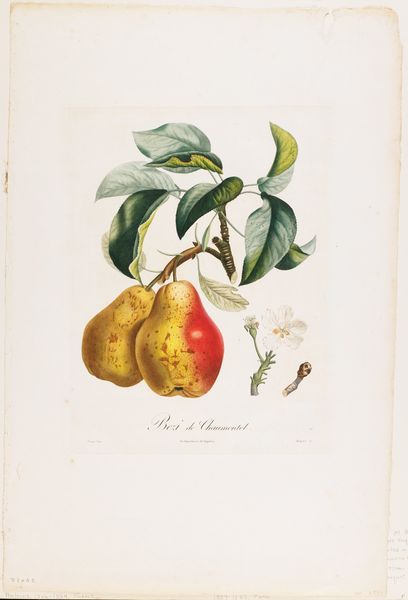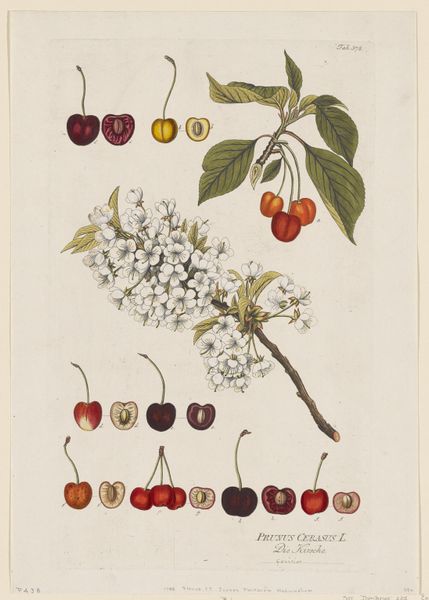
print, watercolor
#
water colours
#
baroque
# print
#
watercolor
#
watercolor
Dimensions: 11 3/4 x 7 3/4 in. (29.85 x 19.69 cm) (plate)
Copyright: Public Domain
Curator: Here we have Giovanni Battista Ferrari's "Aurantium Flore Duplici," created around 1646. It's a captivating botanical print currently held at the Minneapolis Institute of Art. Editor: The first thing that strikes me is how vibrant the watercolor is. It’s remarkable, considering its age. Look at the careful layering and the way light plays across the leaves. Curator: Ferrari was, of course, deeply involved in the intellectual circles of his time. He served as a professor in Rome. His work reflects the burgeoning interest in botany and natural history among the European elite. These botanical illustrations were both scientific and symbolic objects, showcasing knowledge and power. Editor: And beautifully crafted. You can almost feel the texture of the fruit's skin; the way he has built the pigment is fascinating. What sort of labor was involved in producing these prints? Was it a highly specialized skill passed down through workshops? Curator: Absolutely, printmaking in the Baroque period involved skilled artisans. These botanical works often were commissioned by wealthy patrons, demonstrating their refined taste and connection to intellectual pursuits. The dissemination of knowledge was heavily controlled. Editor: I wonder how many iterations were created, what the consumption of materials might reveal about Baroque commerce and trade routes, and to what extent this sort of printmaking offered artisanal opportunities for broader audiences. What we're looking at here involves a complex matrix of labor. Curator: Indeed. We see a negotiation between scientific accuracy and artistic representation. And the use of Latin in the banner—Aurantium Flore Duplici, or double-flowered orange—adds to its aura of scholarly authority. Editor: It’s quite revealing how what we perceive as purely aesthetic or "scientific" objects have profound economic, social, and even political dimensions. Studying its materials is a powerful way to decode that. Curator: It offers a compelling insight into the intersection of art, science, and power in the 17th century. Editor: I’m leaving with a strong curiosity to learn more about the materiality of the printing process from the period.
Comments
No comments
Be the first to comment and join the conversation on the ultimate creative platform.
